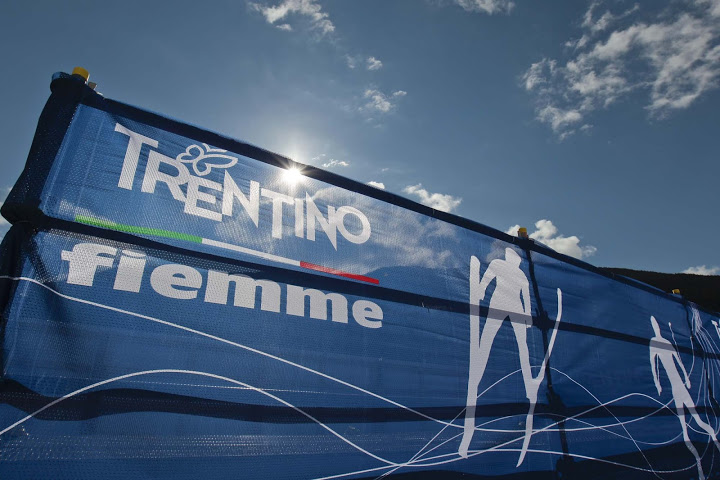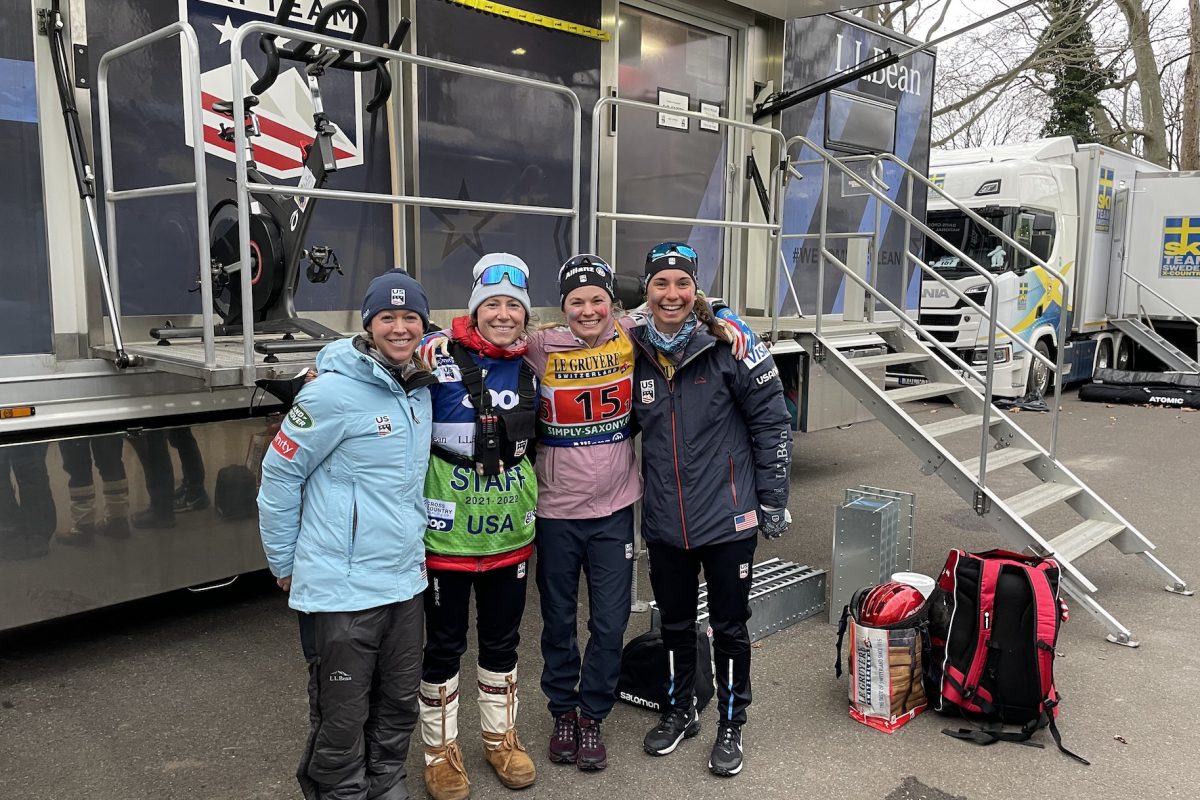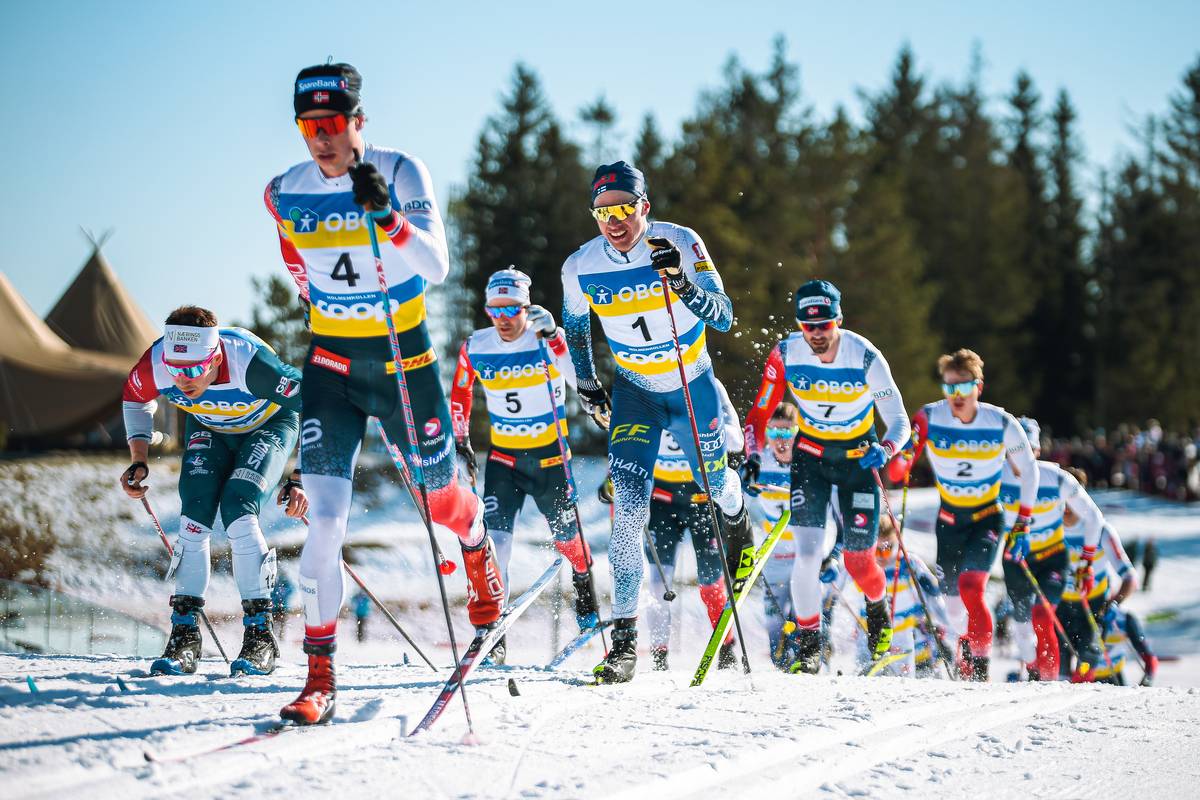
FasterSkier’s coverage of the 2013 FIS Nordic World Ski Championships in Val di Fiemme, Italy, is brought to you by the generous support of Fischer Sports.
VAL DI FIEMME, Italy – Val di Fiemme’s no stranger to World Championships. The winter-sports mecca located in the heart of the Dolomites in northeastern Italy has been around the block a time or two, and is about to host its third FIS Nordic World Ski Championships.
Yes, things are different than in 1991. Luca Zanon, the 2013 World Championships sports assistant, was just being born then, when Val di Fiemme held its first international cross-country, nordic-combined and ski-jumping event.
Homologation? Never heard of it. And if people are going to ski 50 kilometers, the idea was to make as long a loop as possible.
In 2003, the venue hosted the 40th World Championships, one marked by changes. Cross-country sprints grew from 1 to 1.5 kilometers, following a precedent set by the 2002 Olympics in Salt Lake City. Longer sprints? Go figure.
Fast-forward 10 years to the 2013 edition, which kicks off with cross-country qualifying races on Wednesday. This year’s World Championships include some 55 nations, according to Zanon. Female ski jumpers are here in numbers – 46 to be exact – in their third World Championships since Liberec, Czech Republic (2009), and Olso, Norway (2011).
This event will likely attract tens of thousands of spectators and has required the collective effort of more than 1,200 volunteers, many of which worked the 1991 championships, Zanon said.
Times have changed, the courses have been widened and made more viewer-friendly, but the ultimate goal remains the same: to put on a memorable and rock-solid event. When Val di Fiemme was awarded the championships in 2008 (along with the FIS Tour de Ski finals and Nordic Combined World Cup), its organizers made a point to include the valley’s eco-friendly and homegrown tradition. For example, they used local contractors to create new buildings with raw wood at the Lago di Tesero cross-country stadium.
Since then, at least 11 FIS inspections have taken place between the cross-country and jumping venues and according to a press release, “Val di Fiemme never disappoint expectations.”
Zanon took the time to elaborate on the preparations on Tuesday, one day before the first races and opening ceremony.
FasterSkier: How long has this been in the making?
Luca Zanon: Planning all the events, more than four years. It started when we agreed with the sponsoring and then with collecting volunteers, even though we have a strong number of volunteers that are here since the first World Championship in 1991. A lot of them are still working so we didn’t have to collect as many volunteers, just to improve the level of English, to improve the level of IT technology. The age of volunteers, the average, is 10 years [younger] compared with the last World Championships we had here.

Regarding the cross-country venue, it has been renewed. We built another fixed building and the wooden building is removable after the events. It is for TV, it was ecological with the wood, and it is removable.
FS: That TV building is going to be dismantled after? How long did it take to build?
LZ: Yes. One month. There were a lot of people working on it.
FS: How else has this venue and this event changed since 1991?
LZ: For sure, IT technologies and there is a lot of stuff that has to be done with computers now. Maybe 20 years ago they used to do every kind of communication in a completely different way so now everything is concentrated on emails and the exchange of emails. So if you lose one email you lost a very important part of your job. I think that 20 years ago is completely different. You had to be very clear from the beginning with how to communicate with all the other staff with volunteers. Now just with an SMS you can tell them, ‘Come one hour later. Come one hour before.’ Twenty years ago, the chief of volunteers had to go house by house maybe.
In terms of material, the course’s preparation, it is completely different because of the technologies.
FS: How have the courses changed?
LZ: Wider for sure because of FIS regulations and TV wants mass-start competition so there are a lot of athletes on the same time and in the same space of the track. For this reason they have to be wider, and they guarantee a very spectacular overview for the spectators.
If we talk about spectators and television and a spectacular view, I have to say, all the courses are shorter because they tend to, even in the 50 kilometers, to cross the stadium more times to get visibility for sponsors for television. Twenty years ago there was a huge course of 20 kilometers for the last race, the 50 kilometers, they just went two times around and there was only three or four television points. And now every [corner] and every downhill there is three or four cameras and the courses are shorter for this reason. Now the sponsor can be put all the time under the vision of the cameras.
FS: How many athletes are registered?
LZ: The number of athletes asked to enroll was more or less 500 for both men and ladies. It was a bit less for ski jumping, 150 more or less, divided by men and women, about 46 women. And for nordic combined, we have 70 athletes enrolled coming from 17 different names. In total we have 55 nations with all the sports, and some of them will try to qualify tomorrow for the other races.
Tomorrow are the qualifications for cross-country, but there are no official results, there is not the first winner since it is just a qualification race to guarantee the athletes to take part to the next competition starting with the sprint on Thursday.
[Note: The top 10 men and women, who did not have enough FIS points to secure starts before World Championships, will qualify for individual distance races.]
In case they don’t qualify, they can take part in [Thursday’s classic] sprint as well since there is a qualification for the sprint race.
Photo gallery from cross-country venue
Schedules: Cross country | Nordic combined | Ski jumping
Alex Kochon
Alex Kochon (alexkochon@gmail.com) is a former FasterSkier editor and roving reporter who never really lost touch with the nordic scene. A freelance writer, editor, and outdoor-loving mom of two, she lives in northeastern New York and enjoys adventuring in the Adirondacks. She shares her passion for sports and recreation as the co-founder of "Ride On! Mountain Bike Trail Guide" and a sales and content contributor at Curated.com. When she's not skiing or chasing her kids around, Alex assists authors as a production and marketing coordinator for iPub Global Connection.



